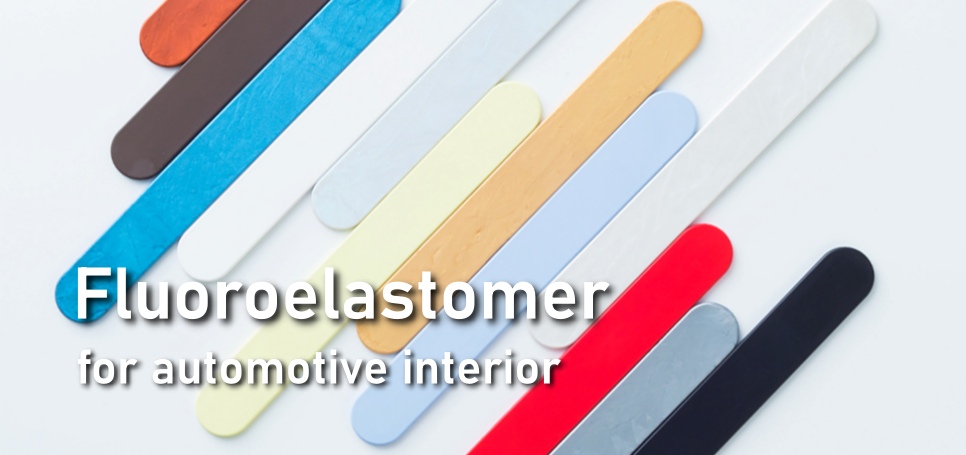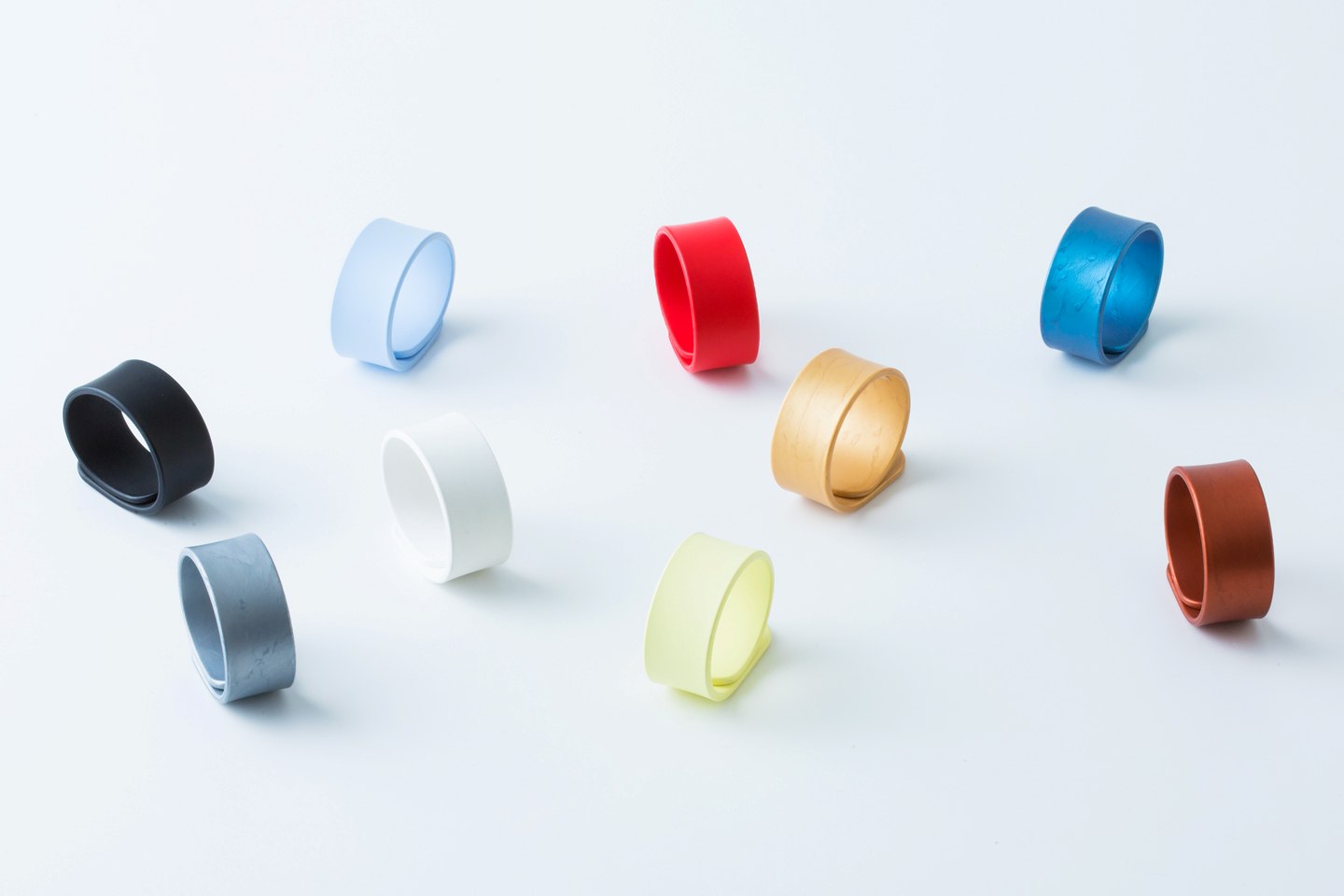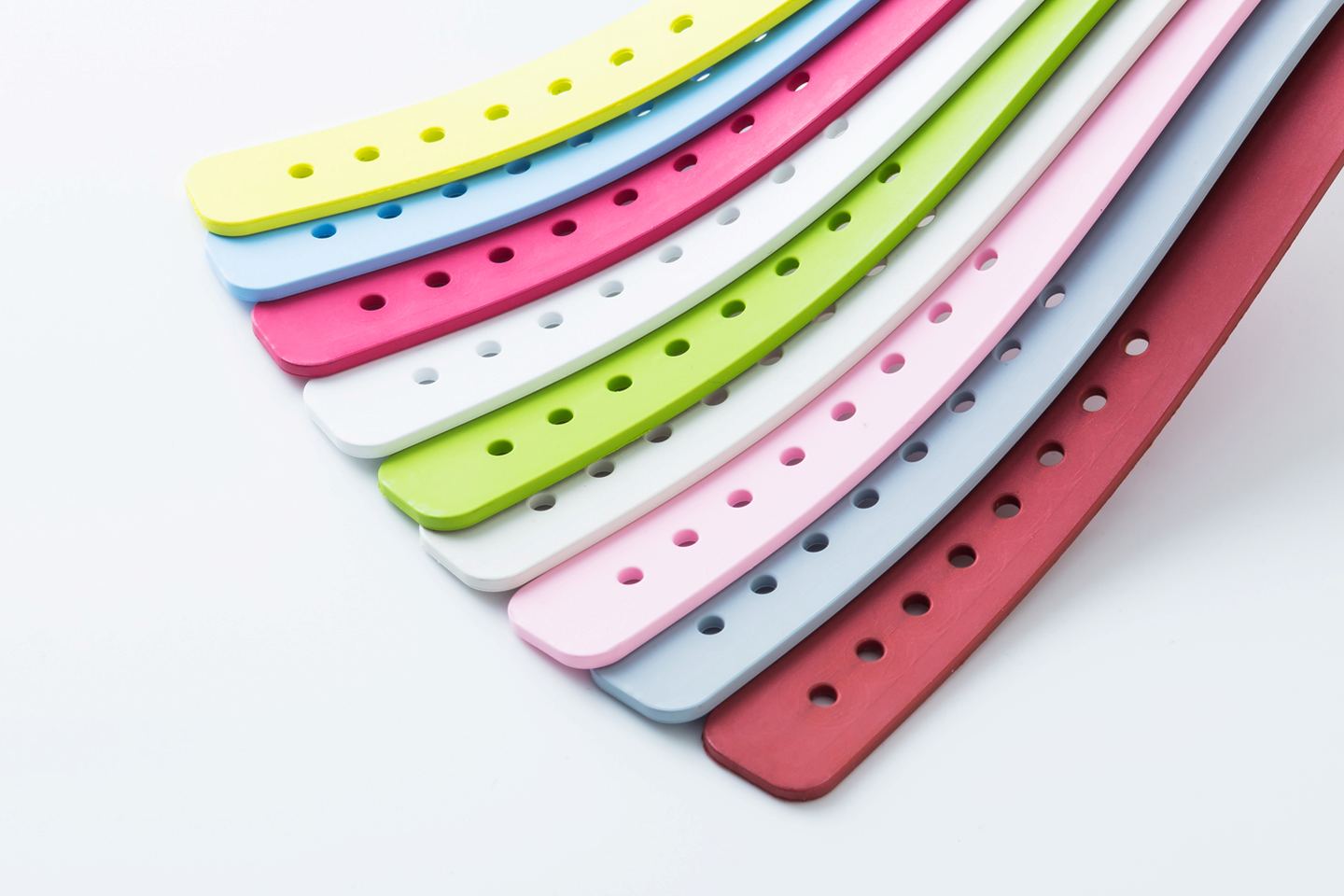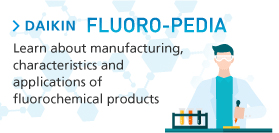
![]()
Technical report
07/2022
Fluoroelastomer with different properties and its application to automotive interiors
Aya Sakai
Keisuke Shiomi
Daikin Industries, Ltd.,
Chemicals Division
This article summarizes the content published in the March 2021 issue of "Material Stage" magazine as "Fluoroelastomer with different properties and its application to automotive interiors". You can check the full text from "DOWNLOAD PDF".
1. Changing needs in the automotive market
In recent years, the automotive industry has been in a "one transition period in 100 years," and megatrends such as CASE and MaaS are drastically changing the existing concept of automotives. For example, looking at sharing, a part of CASE, services and opportunities to use and share the same vehicle with many unspecified users are increasing. In such a usage situation, new materials that realize the antifouling property and design of interior are required.
Fluoroelastomers are drawing attention as a new material in consumer fields such as wearable devices, which have a lead due to hygiene, antifouling, and design needs, and the demand is expanding.This paper introduces fluoroelastomers which are increasingly expected to be applied to automotive interiors as a material that responds to the above changes in the needs of the automotive market.
2. Physical properties of fluoroelastomers for automotive interior materials
Although fluoroelastomers have been used mainly as industrial products, the following properties can be identified for automotive interior materials.
2-1. Durability and chemical resistance
The appearance and texture of fluoroelastomers are not likely to change even when used in various environments for long periods. They are also less likely to change their physical properties due to chemicals such as disinfectants and to experience a sudden break, discoloration, or stickiness caused by hydrolysis, which is a concern with rubber materials. Therefore, the excellent texture can be maintained for continued comfortable use.
2-2. Low aromaticity
On the assumption of daily use, the difference in the aromaticity between fluoroelastomer and silicone rubber was tested to examine the resistance to odor spreading. The odor concentration of fluoroelastomer was more than ten times greater. Compared with silicone rubber, while the fluoroelastomer had almost no odor, the odor spread to the silicone rubber. The fluoroelastomer can solve the problem of odor spread, which is typical of rubber.
2-3. Texture
Different textures can be developed without any additives by changing the surface texturing, such as a mirror surface or matte finish. It feels pleasant to the touch and can create a sense of luxury with a texture, unlike rubber. Moreover, the supple touch feeling continews without being affected by external impact.
2-4. Antibacterial and antifungal compositions
With the increasing use of automotive by car sharing with many unspecified users, the market needs for antibacterial and antiviral properties in automotive interiors are expected to increase. It was proven that antibacterial and antifungal properties could be added to fluoroelastomers without compromising their workability and general physical properties of the rubber by compounding antibacterial and antifungal agents.
2-5. Toning compositions
Toning technology allows the development of various colors, from clear and vivid colors to chic colors. Various colors are visually appealing, and the development of diverse goods becomes possible.
Fig.1 Color compounds


3. Applications to automotive interior materials
Most demand for fluoroelastomers has been for use in "invisible" fields such as around the internal combustion engines of automotives. However, in new fields such as wearable devices, the unique texture resulting from their high specific gravity has shattered the stereotype of "rubber = cheap goods.” They are well-received as a new material that creates a sense of luxury. We are aware of the growing need for automotive interiors because of the recent increase in inquiries from the automotive industry.
-
Therefore, we produced a prototype of a steering wheel cover to provide a concrete image of the application to automotive interiors and to understand the properties of fluoroelastomer more intuitively by directly holding it.
Fig.2 Prototype of a colored fluoroelastomer steering wheel cover (the orange and red parts are made of fluoroelastomers)

In the automotive interior, the steering wheel cover is the main part that the driver's hands touch, and it has a significant impact in terms of the proportion of the driver's range of vision, making it the interior component for which the market has the greatest expectations for the application of fluoroelastomers. The target market is not limited to new cars, but it is also conceivable to develop it as custom parts for sharing and aftermarket parts, which have high needs for antifouling and design.
We are committed to technological development, quality improvement, and stable supply to provide solutions utilizing fluoroelastomers, which are available in a rich range of color variants, to meet the ever-increasing hygiene and design needs in the automotive interior field.
Note: 1) This product was developed as an industrial product, not for medical or food use. In addition, when fluoroelastomers are used for applications that come in contact with the human body, such as wristwatch-type wearables, their biocompatibility needs to be verified.
Note: 2) This article summarizes the content published in the March 2021 issue of Material Stage magazine as " Fluoroelastomer with different properties and Its application to automotive interiors ". You can check the full text from "DOWNLOAD PDF".



